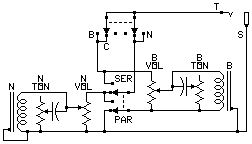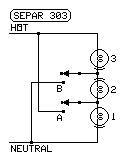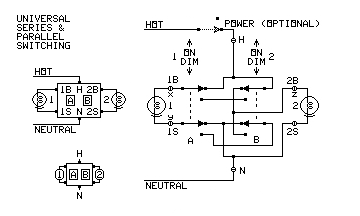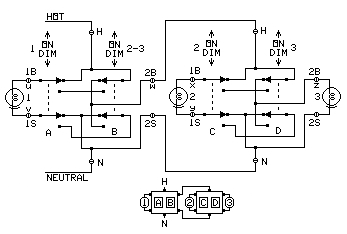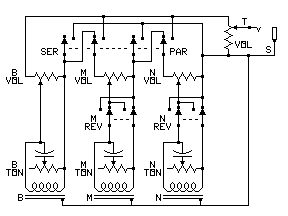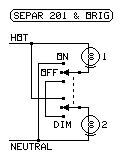
|
KEY TO TABLE ENTRIES ON
DIM
PAR
SER
B
N
C
off
−
Letters indicate closed switches. No letter for a switch, or an o for a switch, means the switch is open, or is in the unlabeled position. |
|||||||||||||||||||||||||
|
||||||||||||||||||||||||||
|
||||||||||||||||||||||||||
-
SEPAR 204

SWITCH PICKUP A B C 1 2 o B SER SER o C off ON A B ON off A C PAR PAR The SEPAR 204 Series-Parallel Switching Circuit can use either pickup alone, both in series, or both in parallel. Do not use SEPAR 203 with guitar pickups.
A special version of SEPAR 204 must be used with no center-off position on switch B C). The other switch positions are the same. The hot connections on a pickup are removed if the ground side is opened.
Note that any switch position with a letter on it is the position indicated by that letter in the table.
Remember that guitar pickups are substituted for the lamps shown in the diagrams.
|
|
||||||||||||||||||||||||||||||||||||||||||||||||||||||||||||||||||||||||||||||||||||||||||||||||||||||||||||||||||||||||||||||||||||||||||||||||||||
|
|||
